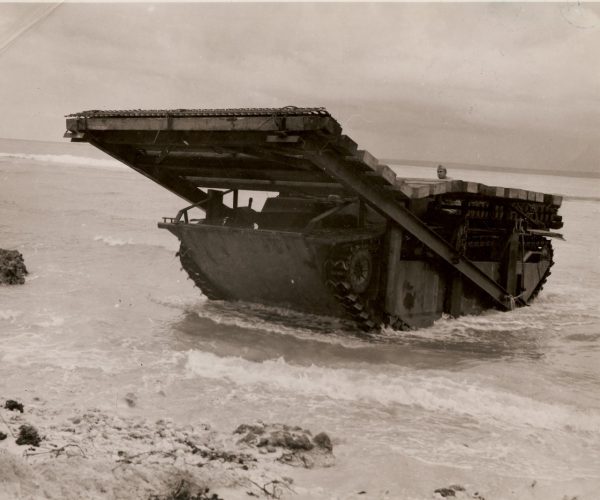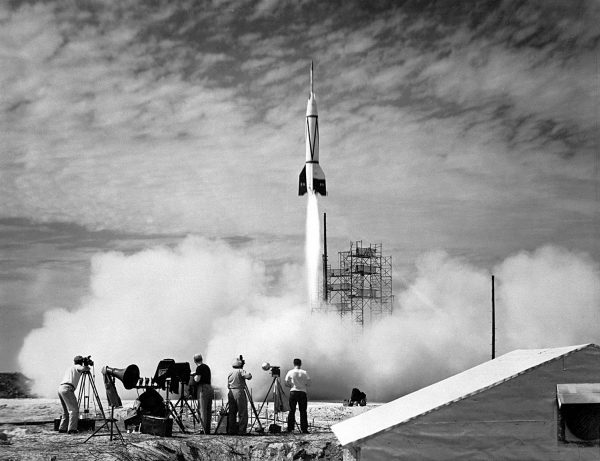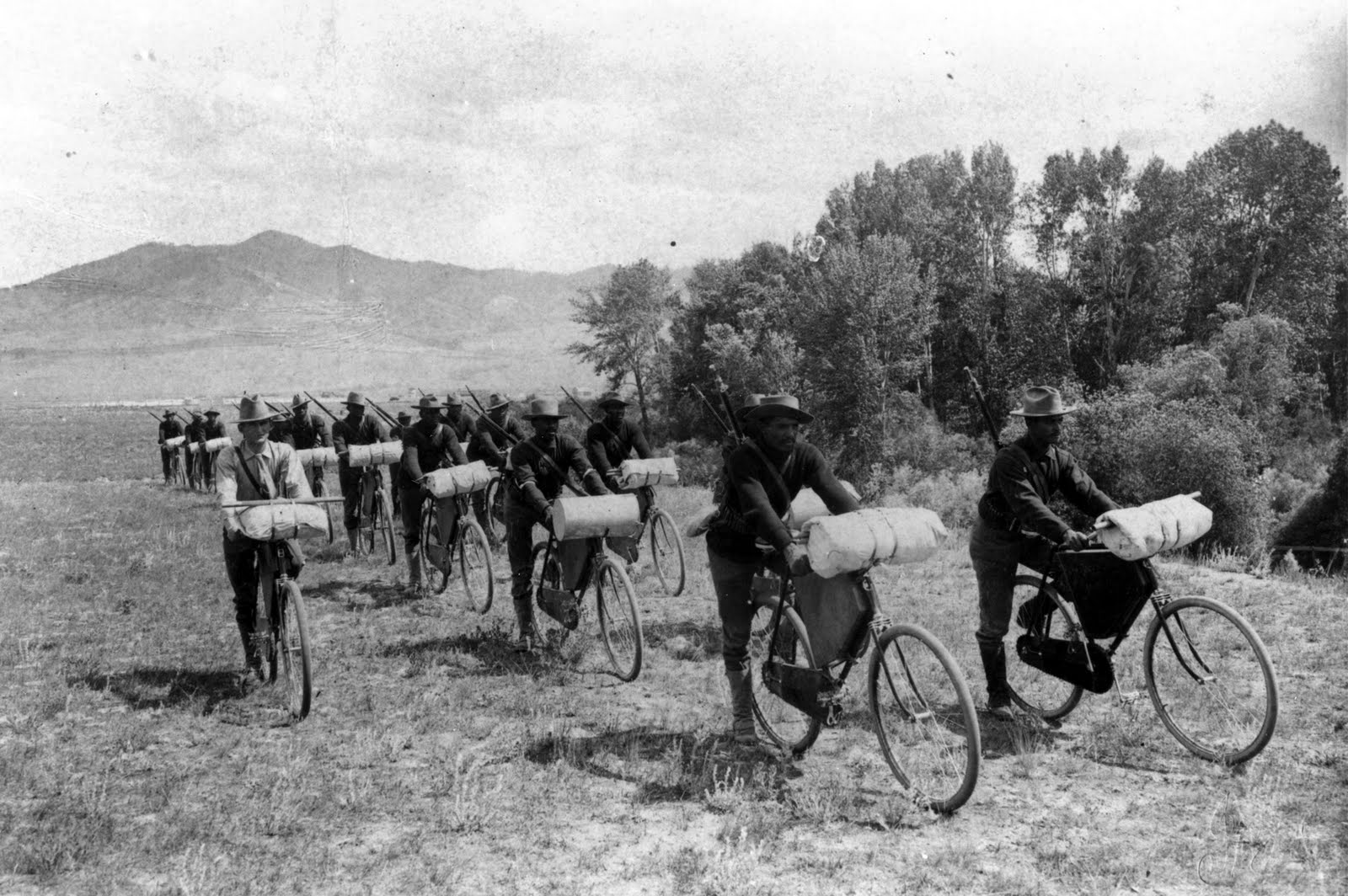July 24 in U.S. military history
1897: A crowd of over 10,000 greets the black soldiers of the 25th Infantry Regiment’s “Bicycle Corps” (featured image) as they ride into St. Louis’ Forest Park, completing a 41-day, 1,900-mile trip from Fort Missoula, Montana.
1944: Thanks to a custom-built landing vehicle known as the “Doodlebug,” specially modified to carry ladders that allows vehicles to scale rocky shorelines, the Fourth Marine Division avoids the heavily defended beaches on Tinian and catches the island’s Japanese defenders off guard. By August 1, the island is secured and Seabees begin construction on the runways that the B-29s Enola Gay and Bock’s Car will use to deliver the atomic bombs that bring World War II to an end.

1945: 600 aircraft from Task Force 38, commanded by Vice Adm. John S. McCain, and hundreds of B-29 Superfortress bombers attack mainland Japan. Five Japanese warships are destroyed and several more damaged in the raid.
Meanwhile, President Harry Truman authorizes the use of the new atomic weapon, and Gen. Henry H. “Hap” Arnold is presented with a list of potential targets. Truman informs his Soviet counterpart Joseph Stalin that America has developed such a weapon, but the Stalin has already learned this from spies within the Manhattan Project.
1950: A captured German V-2 rocket with a WAC Corporal missile fitted on top as a second stage blasts off from Cape Canaveral Air Force Station on Florida’s Atlantic coast. “Bumper 8” traveled 200 miles downrange and reached a height of 10 miles in the first-ever launch from a facility that will soon begin sending men rockets — and later, men — into space.

1965: Soviet missile crews claim their first surface-to-air missile kill of the Vietnam War. Four F-4 Phantoms, flying escort for a bombing raid north of Hanoi, are targeted. Three jets are damaged and a Phantom flown by Capt. Richard P. Kiern and his weapons/systems officer Roscoe H. Fobair become the first pilots shot down by a SAM. Fobair fails to eject and is killed in action, and his remains are repatriated in 2001. Kiern is captured and spends the next seven and a half years in captivity.
Before volunteering for service in Vietnam, Kiern served as a B-17 flight officer, and was shot down during his first mission in World War II, spending eight months as a prisoner of war in Nazi Germany. The Soviet Union has sent thousands of advisers to train the North Vietnamese to use the weapons, and for the next couple years, any American warplane downed by missiles are done so by Soviet missilemen. By war’s end, SAMs account for 205 American aircraft.
1966: When Lance Corporal Richard A. Pittman learns of a company of Marines is taking heavy casualties near the De-Militarized Zone, he grabs a machine gun and several belts of ammunition and rushes to the firefight. Along the way he blows through an enemy force and wipes them out at point-blank range, then knocks out two more automatic weapons. Reaching the battle, Pittman sets up his machine gun in the face of a full-frontal assault by 30-40 enemy soldiers. He fires away until his weapon is destroyed, then obtains a submachine gun from a fallen enemy soldier and a pistol from a fellow Marine and kept up his defense until the Communist attack is shattered.
Pittman is awarded the Medal of Honor in 1968 and retires from the Marine Corps as a master sergeant 20 years later.
1969: The Apollo 11 mission comes to an end when the capsule containing Neil Armstrong, Buzz Aldrin, and Michael Collins splashes down in the Pacific Ocean and is recovered by a team of hand-picked Underwater Demolition Team swimmers. Soon, the astronauts (wearing biological isolation gear to protect Earth from possible lunar contamination) are transferred by helicopter to the aircraft carrier USS Hornet, where they will spend 21 days in isolation.

Holy hand-grenades! Quite a feat!